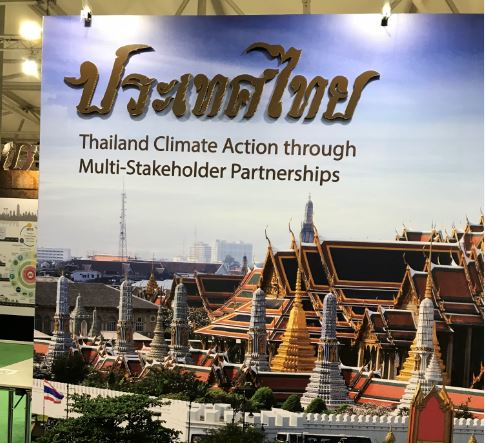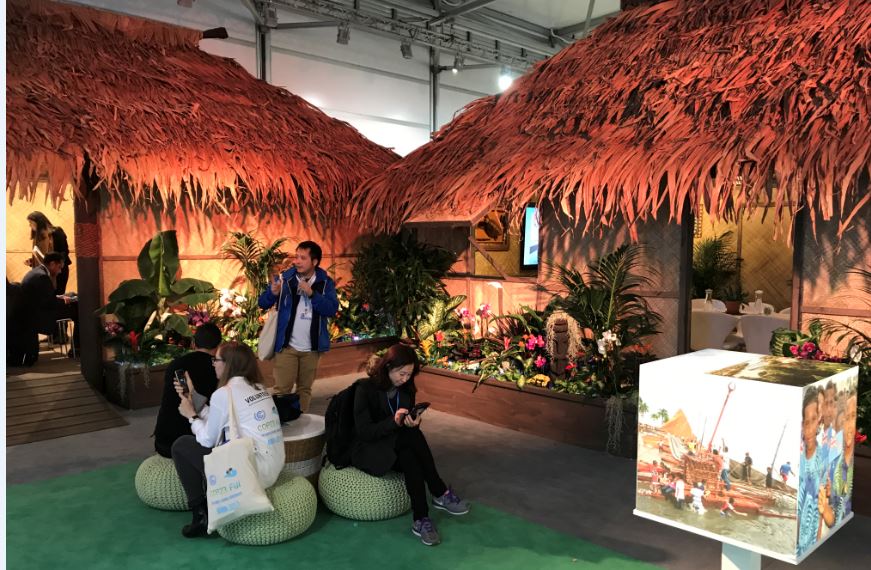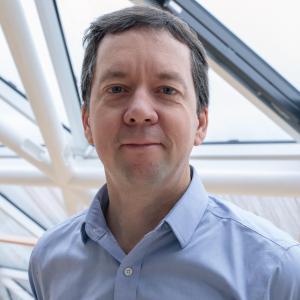At the COP23 climate conference in Bonn, participants focus on climate change—and sometimes on free lattes
If you love clever slogans, the COP23 climate conference has dozens of climate catchphrases splashed across booths and pavilion walls: “More Transparency.” “Pledge to be a locavore for a day.” “Oceans of Impact.” “Co-Producing Knowledge.” “Good for Climate, Good for Growth,” “Momentum Change.” There also are a few less successful jingles: “Thailand Climate Action through Multi-Stakeholder Partnerships” or “Beethoven is Bonn and so are you!”
The purpose of the two-week event in Bonn, led this year by Fiji and known as the 23rd Conference of the Parties, or COP23, is to negotiate how to implement the Paris Agreement on climate change that countries signed two years ago.
“COP23 is valuable for creating awareness among the participants and among the general population that there is a threat of climate change,” says Marco Beros, a senior water expert at the European Investment Bank who joined in a climate-adaptation discussion at the Bank’s pavilion last week. Water is the central theme of this COP, because climate change can make it scarce in some places and cause massive storms in other regions.

The climate conference is divided into two zones this year – Bonn and Bula. The countries’ climate negotiators are working in the restricted Bula zone, which is named after the Fijian word for welcome. The Bonn zone is where hundreds of nongovernmental organizations, companies and countries show off their climate action ideas and debate solutions.
Two key concerns of conference participants this year are the need for more money to fight climate change and the desire to give local people a bigger voice.
“We want people to listen to us and understand that the people who need help from climate change are the small communities,” says Nathalie Koffi of Dakar, Senegal, an adviser for Enda Energie, a global organization that fights poverty and promotes sustainable development. Koffi says coming to the climate conference gives her hope, “because it makes people understand the many environmental challenges, and now everyone is starting to understand that we need to make changes.”
Paperless or paper light?
Change doesn’t always come easily, though. Visitors to the Bonn zone were asked to leave their paper at home, and the conference’s website calls for a “paper light” event. But paper and brochures could be found everywhere – piled on desks, stacked on chairs, taped to walls.
One spot following the no-paper rule was the Information Desk, which had no maps or brochures to hand out, but it was giving away colourful water bottles and informing people that using the reusable containers would save 570,000 disposable cups.

Fiji offers one of the most creative displays at the climate conference.
Fiji and India vie for best pavilion
Fiji has the most original pavilion in the Bonn zone, recreating a traditional village with thatch-covered rooms, walls of plants, a wooden canoe, and artisans designing bracelets. But India’s was the most high-tech display, offering iPads, large, touch-sensitive screens, lots of mirrors, big LED light panels, and a wall detailing the country’s plan to develop solar trees.
Tarun Malhotra, designer of the Indian pavilion, says the country needs to make a big impression at Bonn because it has a long and deep connection to the environment. “We pray to trees, we pray to rivers, we do yoga. We have been into the environment since time immemorial.”
The European Investment Bank has provided more than EUR 1.7 billion for long-term investment in India, supporting sustainable transport, renewable energy, small business and industrial investment.

The climate exclamation conference
This year’s conference is highlighting water issues like rising sea levels and storms, but it is also promoting politeness and exclamations points. Throughout the Bonn zone, visitors rest in comfortable chairs surrounded by signs shouting “Good luck!”, “Nice to meet you!”, “Viel Gluck!”, “Wananavu!” (Fijian for “You are awesome!”) and “Bula vinaka!” (“A warm hello!” Again from Fiji.)

The German pavilion’s free coffee bar was one of the most popular sites at COP23.
Come for the climate talks, stay for the coffee
A latte macchiato in the conference hall cafés sells for EUR 3.50. But most conference participants crowd all day around the German pavilion’s free coffee bar, where baristas dressed in black and white pull real espressos and add fancy foam swirls on top of lattes.
We are still in
The United States chose not to pay for a pavilion in the Bonn zone this year, after President Donald Trump vowed to pull out of the Paris Agreement, but U.S. college students still came to distribute brochures declaring “We are still in” and directing people to a website of the same name.
“There are many things we can still do in our states and by working with companies to help the climate,” says Anna Brent, a US college student from Colorado who was handing out brochures. “We want to ask everyone here not give up on us.”
